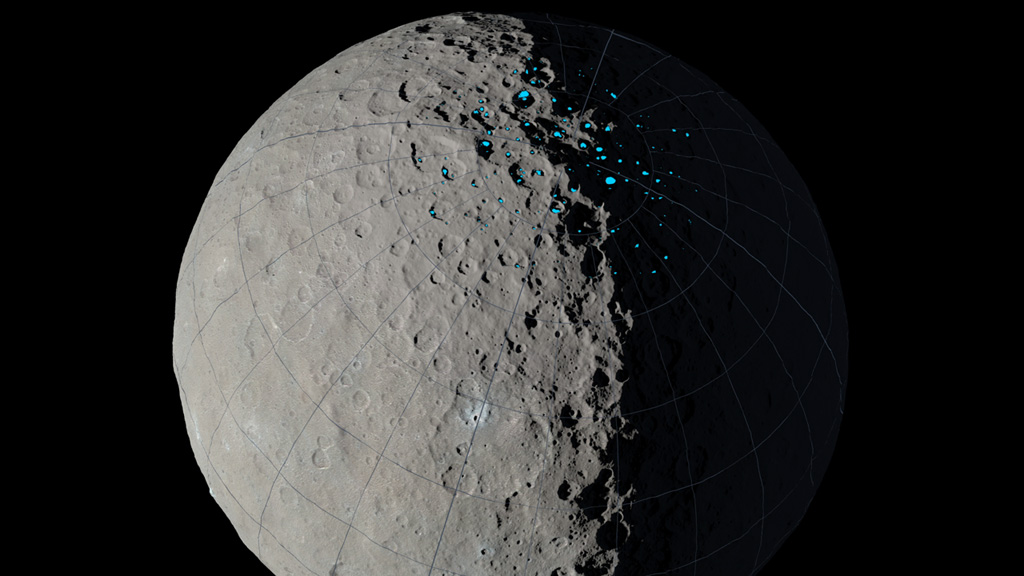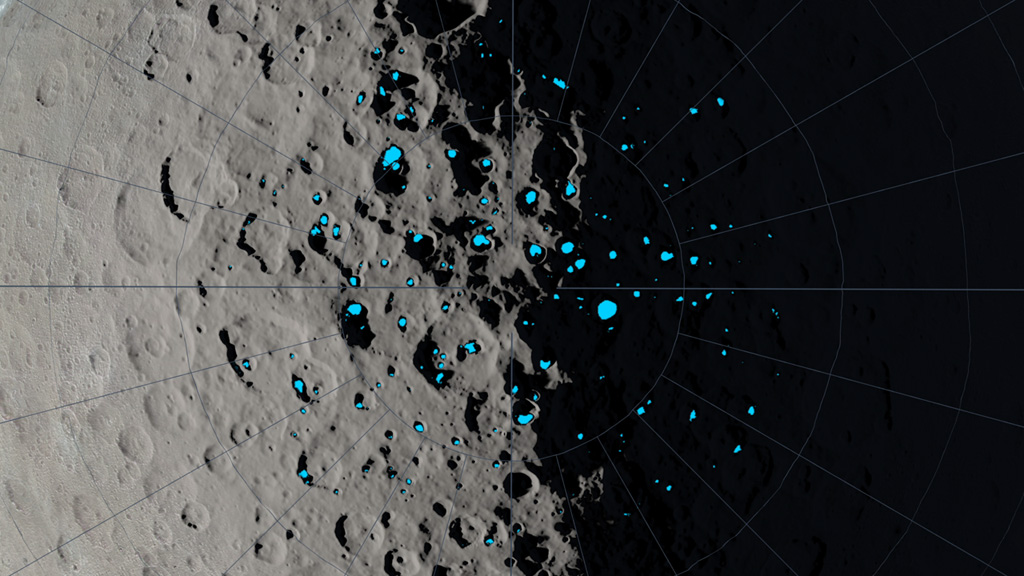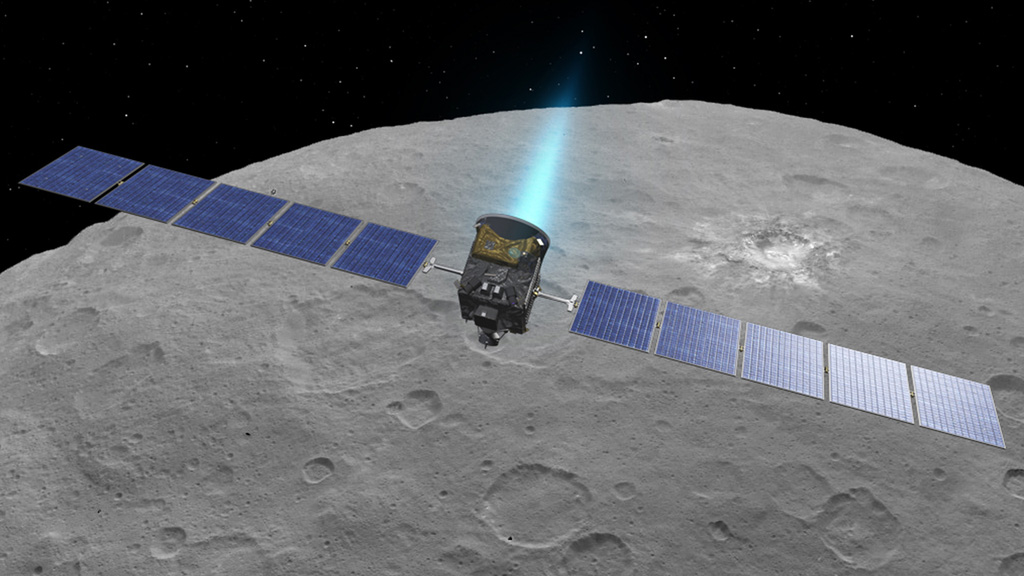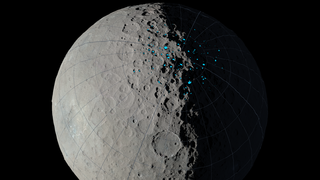Planets and Moons
ID: 12304

Since NASA’s Dawn spacecraft arrived at Ceres in March 2015, scientists have learned a lot about the dwarf planet. Now, by combining images taken by the spacecraft with a computer model, researchers mapped locations in Ceres’ northern hemisphere that are in constant darkness. These dark areas, called permanently shadowed regions, only receive indirect light from the sun. This keeps their surface temperature extremely low, allowing ice to collect over time. The areas are typically located on a crater floor or along a section of a crater wall facing toward the pole. Scientists think most have been cold enough to accumulate water ice for a billion years, suggesting that ice deposits could exist there now. Future studies of these regions could help explain the origin of ice seen in shadowed craters on other worlds in our solar system. Watch the video for a close look at Ceres' permanently shadowed regions.



Cool Craters




Source Material
For More Information
Story Credits
Lead Visualizer/Animator:
Ernie Wright (USRA)
Video Editor:
Sophia Roberts (USRA)
Producer:
Dan Gallagher (USRA)
Scientist:
Erwan M. Mazarico (NASA/GSFC)
Lead Writer:
Elizabeth Zubritsky (ADNET)
Ernie Wright (USRA)
Video Editor:
Sophia Roberts (USRA)
Producer:
Dan Gallagher (USRA)
Scientist:
Erwan M. Mazarico (NASA/GSFC)
Lead Writer:
Elizabeth Zubritsky (ADNET)
Please give credit for this item to:
NASA's Scientific Visualization Studio
Ceres surface close-up image courtesy of NASA/JPL-Caltech/UCLA/MPS/DLR/IDA
Dawn spacecraft image courtesy of NASA/JPL-Caltech
NASA's Scientific Visualization Studio
Ceres surface close-up image courtesy of NASA/JPL-Caltech/UCLA/MPS/DLR/IDA
Dawn spacecraft image courtesy of NASA/JPL-Caltech
Short URL to share this page:
https://svs.gsfc.nasa.gov/12304
Keywords:
SVS >> App
NASA Science >> Planets and Moons
https://svs.gsfc.nasa.gov/12304
Keywords:
SVS >> App
NASA Science >> Planets and Moons








